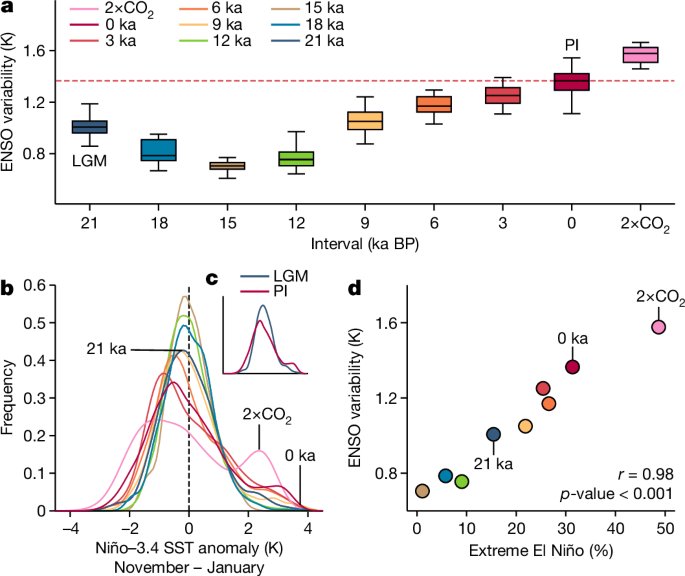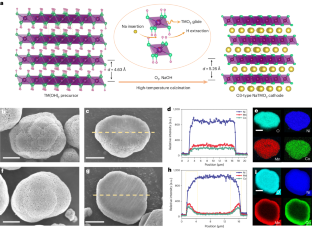2024-09-26 アリゾナ大学
<関連情報>
- https://news.arizona.edu/news/ice-age-clues-point-more-extreme-weather-patterns-our-future
- https://www.nature.com/articles/s41586-024-07984-y
極端なエルニーニョの将来的な増加は過去の氷河期の変化で裏付けられる Future increase in extreme El Niño supported by past glacial changes
Kaustubh Thirumalai,Pedro N. DiNezio,Judson W. Partin,Dunyu Liu,Kassandra Costa & Allison Jacobel
Nature Published:25 September 2024
DOI:https://doi.org/10.1038/s41586-024-07984-y

Abstract
El Niño events, the warm phase of the El Niño–Southern Oscillation (ENSO) phenomenon, amplify climate variability throughout the world1. Uncertain climate model predictions limit our ability to assess whether these climatic events could become more extreme under anthropogenic greenhouse warming2. Palaeoclimate records provide estimates of past changes, but it is unclear if they can constrain mechanisms underlying future predictions3,4,5. Here we uncover a mechanism using numerical simulations that drives consistent changes in response to past and future forcings, allowing model validation against palaeoclimate data. The simulated mechanism is consistent with the dynamics of observed extreme El Niño events, which develop when western Pacific warm pool waters expand rapidly eastwards because of strongly coupled ocean currents and winds6,7. These coupled interactions weaken under glacial conditions because of a deeper mixed layer driven by a stronger Walker circulation. The resulting decrease in ENSO variability and extreme El Niño occurrence is supported by a series of tropical Pacific palaeoceanographic records showing reduced glacial temperature variability within key ENSO-sensitive oceanic regions, including new data from the central equatorial Pacific. The model–data agreement on past variability, together with the consistent mechanism across climatic states, supports the prediction of a shallower mixed layer and weaker Walker circulation driving more frequent extreme El Niño genesis under greenhouse warming.



